Abstract
1 In several studies clobazam exhibited a potency which ranges between that of chlordiazepoxide and diazepam. Its anxiolytic and anti-aggression effects are produced by doses usually ranging below those that cause disorders in motor activity.
2 This separation was demonstrable to an even greater degree with the desmethyl metabolite. The activity of the metabolite, however, was weaker than that of the original substance.
3 The advantage of clobazam compared with the 1,4 benzodiazepines lies mainly in the fact that motor activity is influenced only after very high doses, these doses being markedly above those required to induce tranquillizing and anti-aggression activities.
4 Clobazam has no marked effect on the cardiovascular system, respiration or excretion.
Full text
PDF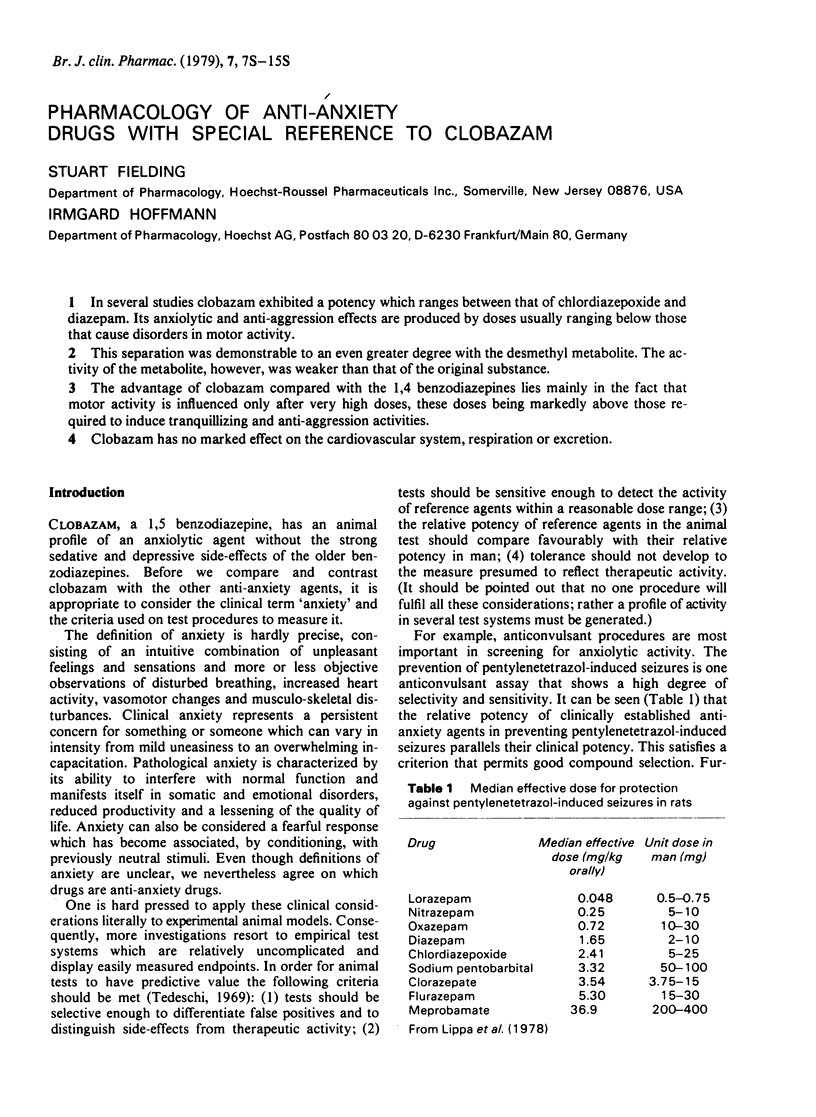
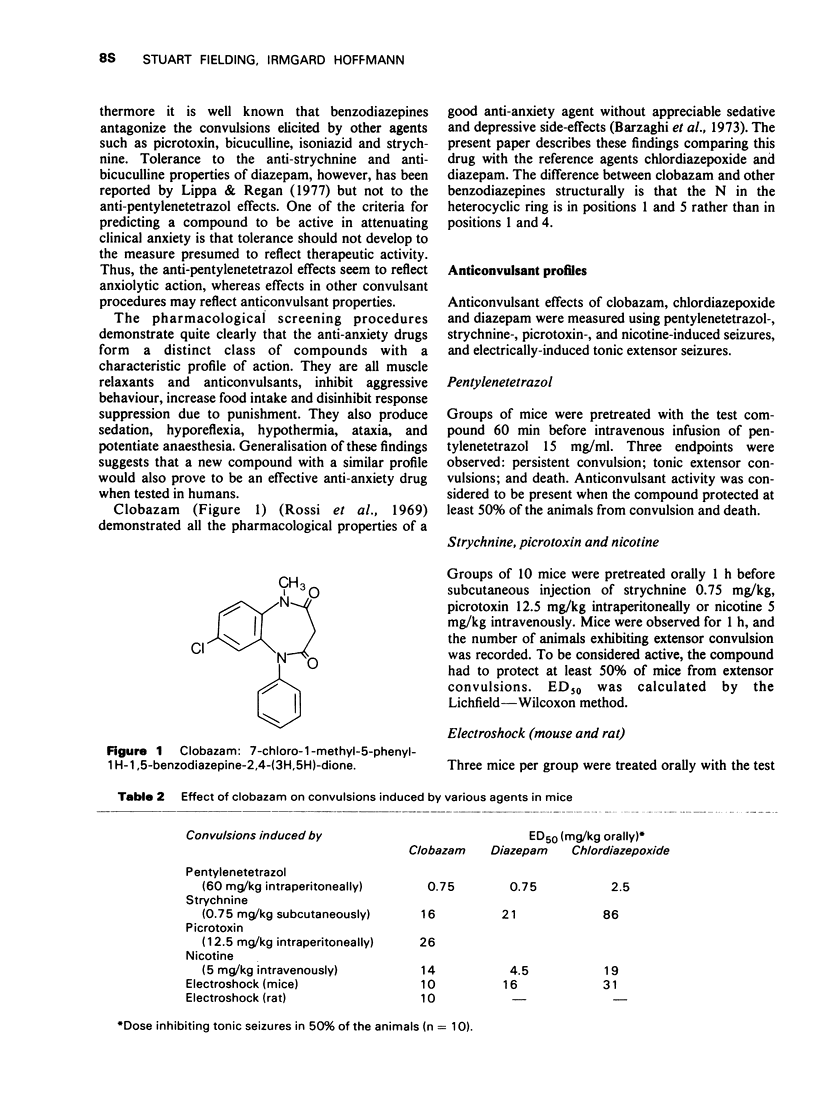

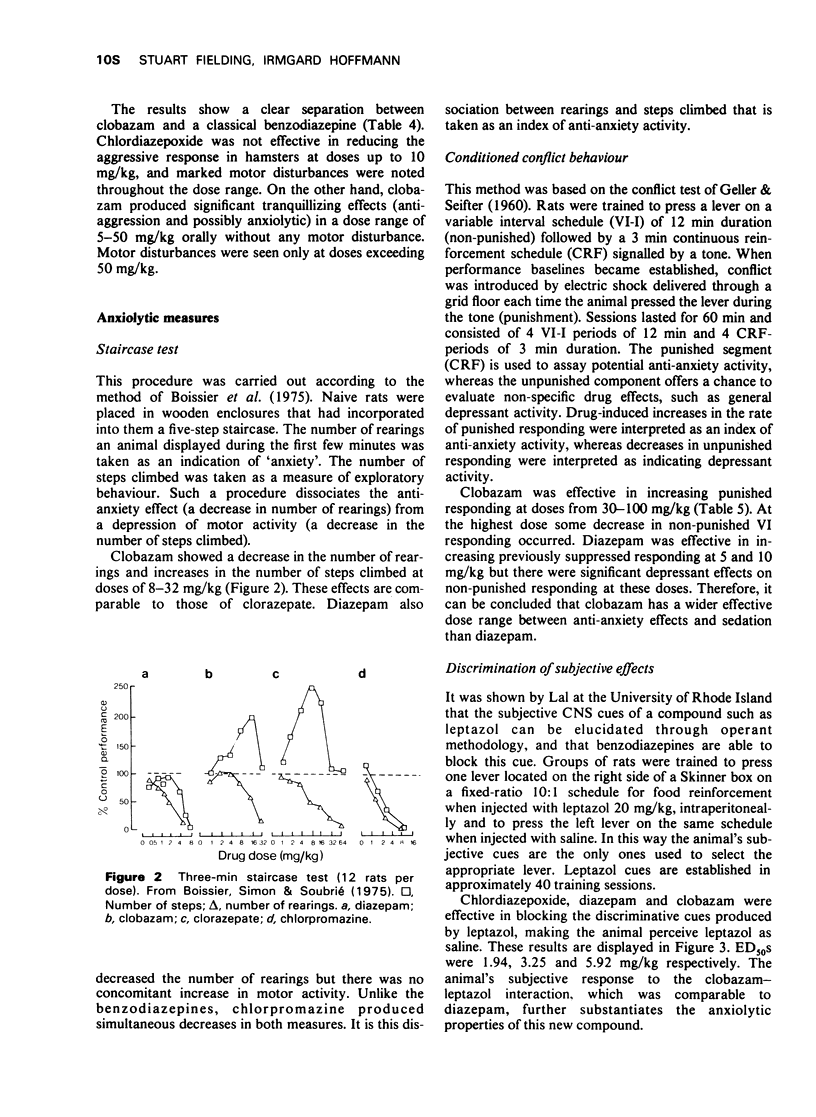
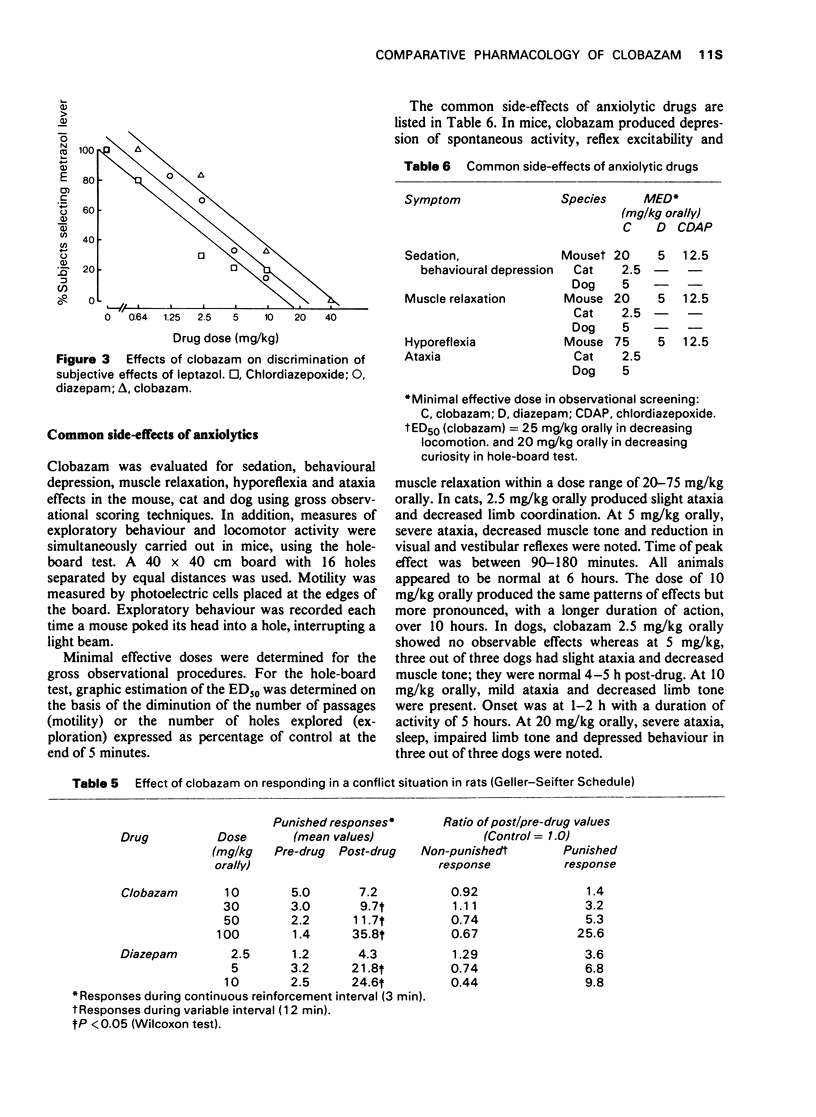
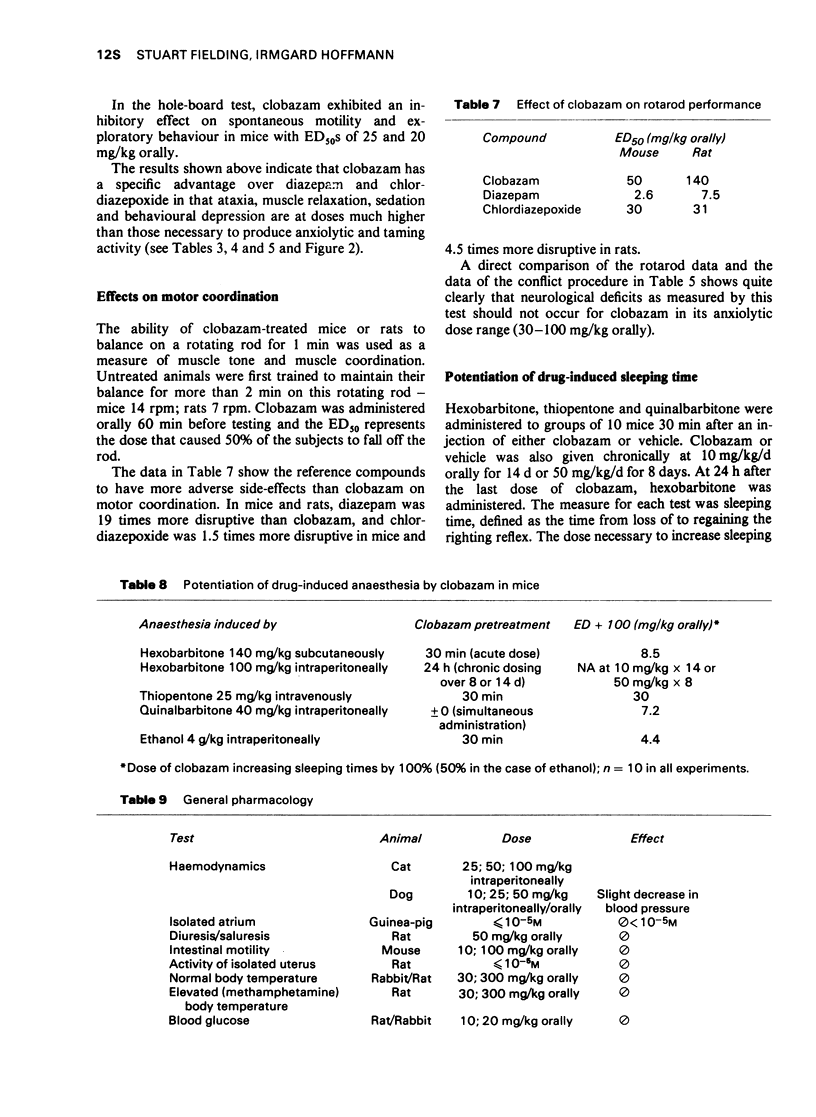

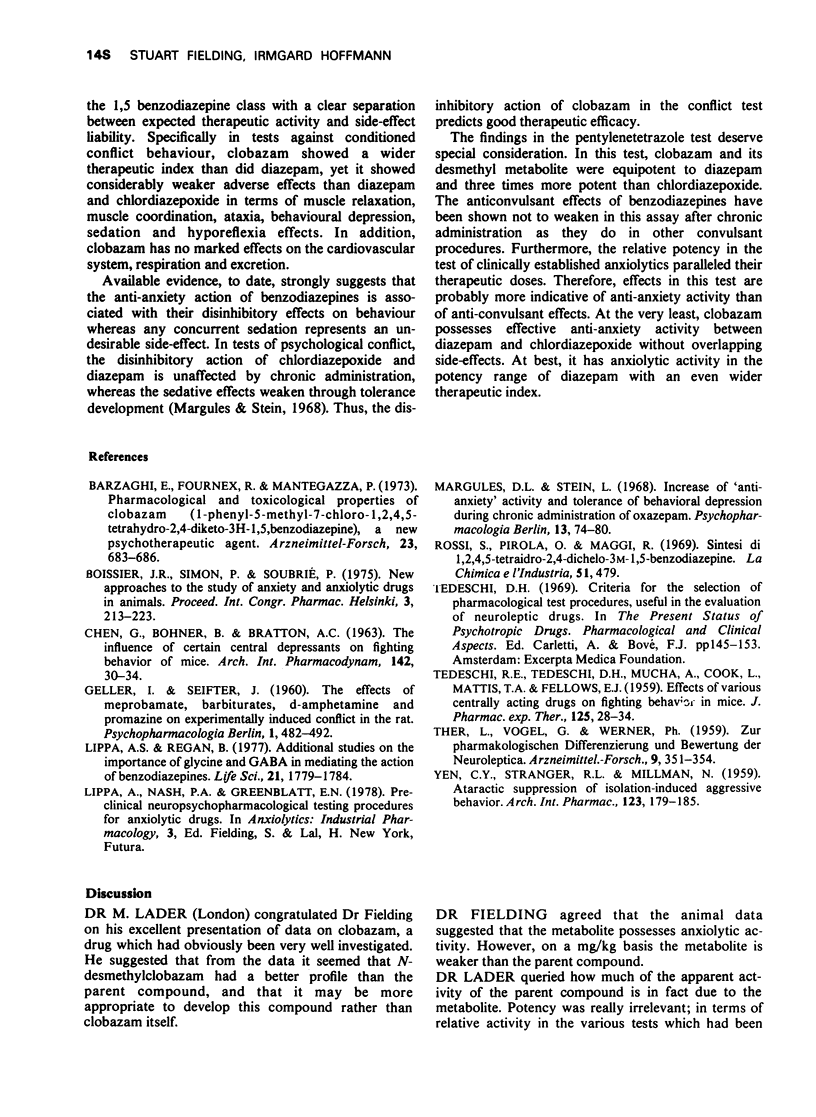
Selected References
These references are in PubMed. This may not be the complete list of references from this article.
- Barzaghi F., Fournex R., Mantegazza P. Pharmacological and toxicological properties of clobazam (1-phenyl-5-methyl-8-chloro-1,2,4,5-tetrahydro-2,4-diketo-3H-1,5-benzodiazepine), a new psychotherapeutic agent. Arzneimittelforschung. 1973 May;23(5):683–686. [PubMed] [Google Scholar]
- CHEN G., BOHNER B., BRATTON A. C., Jr The influence of certain central depressants on fighting behavior of mice. Arch Int Pharmacodyn Ther. 1963 Mar 1;142:30–34. [PubMed] [Google Scholar]
- Lippa A. S., Regan B. Additional studies on the importance of glycine and GABA in mediating the actions of benzodiazepines. Life Sci. 1977 Dec 15;21(12):1779–1783. doi: 10.1016/0024-3205(77)90158-8. [DOI] [PubMed] [Google Scholar]
- Margules D. L., Stein L. Increase of "antianxiety" activity and tolerance of behavioral depression during chronic administration of oxazepam. Psychopharmacologia. 1968;13(1):74–80. doi: 10.1007/BF00401620. [DOI] [PubMed] [Google Scholar]
- TEDESCHI R. E., TEDESCHI D. H., MUCHA A., COOK L., MATTIS P. A., FELLOWS E. J. Effects of various centrally acting drugs on fighting behavior of mice. J Pharmacol Exp Ther. 1959 Jan;125(1):28–34. [PubMed] [Google Scholar]
- THER L., VOGEL G., WERNER P. Zur pharmakologischen Differenzierung und Bewertung der Neuroleptica. Arzneimittelforschung. 1959 Jun;9(6):351–354. [PubMed] [Google Scholar]
- YEN C. Y., STANGER R. L., MILLMAN N. Ataractic suppression of isolation-induced aggressive behavior. Arch Int Pharmacodyn Ther. 1959 Dec 1;123:179–185. [PubMed] [Google Scholar]


